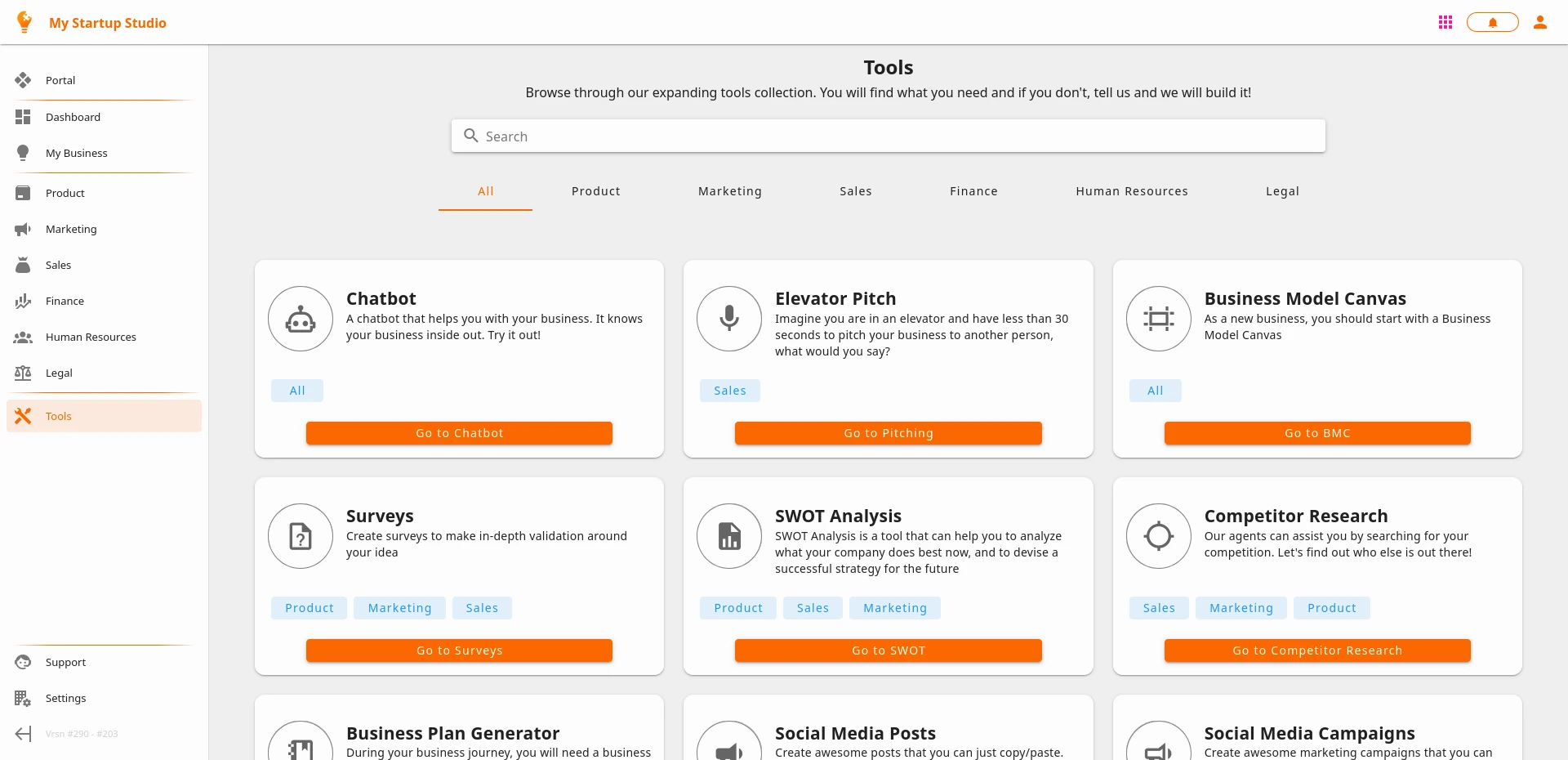The Mistake Many Startups Make: Focusing Solely on Product Development
In today's fast-paced startup landscape, many entrepreneurs focus entirely on product development, neglecting the importance of user acquisition. This oversight can lead to a product that is innovative but lacks users, rendering it ineffective. As stated by FasterCapital (2024), 'user acquisition is not just about getting users to download your app or visit your website; it’s about creating a sustainable growth strategy that keeps users engaged and coming back.'
The Consequences of Neglecting User Acquisition
Neglecting user acquisition can have severe consequences for startups. Without a solid user acquisition strategy, attracting users can feel like an uphill battle. According to Statista, 90% of startups fail, and a significant reason for this is poor user acquisition strategies.
The Importance of User Acquisition
User acquisition plays a vital role in establishing brand recognition and building a strong brand identity. As startups acquire new users, their brand becomes more visible and recognizable. Positive user experiences and word-of-mouth marketing can further amplify brand recognition, leading to increased trust and loyalty among users.
Successful Startups that Prioritize User Acquisition
Successful startups like Airbnb, Uber, and Slack have prioritized user acquisition, recognizing its importance in driving growth and revenue. These companies have invested heavily in user acquisition strategies, including social media marketing, influencer marketing, paid advertising, referral marketing, partnerships, email marketing, measuring success, optimizing and improving, budgeting and ROI, and scaling and expansion.
Cost-Effective Marketing Strategies for Early Stage Startups
In the early stages of a startup, acquiring users can be a significant challenge. One way to overcome this obstacle is by implementing cost-effective marketing strategies that effectively reach and engage potential customers. Here are some tactics that startups can consider:
Content Marketing
Content marketing involves creating valuable content that addresses the needs and interests of potential customers. This can include blog posts, videos, podcasts, and social media updates. The key to successful content marketing is to create content that is relevant, informative, and engaging DotComMagazine.
Startups should focus on creating high-quality content that provides value to their target audience. This can help build trust and credibility with potential customers, making them more likely to convert into users DigitalSolley.
Social Media Marketing
Social media marketing is another important component of user acquisition. It involves using social media platforms to promote a product or service and engage with potential customers Startupnv.
Startups should focus on building a strong presence on social media platforms that align with their target audience. For example, a startup targeting millennials may focus on Instagram and TikTok, while a startup targeting business professionals may focus on LinkedIn DotComMagazine.
Influencer Marketing
Influencer marketing is a growing trend in user acquisition. It involves partnering with influencers who have a large following in the target market to promote a product or service DotComMagazine.
Startups should choose influencers who are authentic and relevant to their target audience. Influencers can help startups reach new audiences and build credibility with potential customers.
Paid Advertising
Paid advertising is a common method for user acquisition. It involves creating ads that promote a product or service on various platforms such as Google Ads, Facebook Ads, and LinkedIn Ads DotComMagazine.
Startups should focus on targeting the right audience with their ads to maximize returns. This can be done by setting up specific targeting options such as demographics, interests, and behaviors.
Email Marketing
Email marketing is a cost-effective way for startups to reach potential customers directly. It involves sending regular newsletters and promotional emails to subscribers DigitalSolley.
Startups should focus on building an email list by providing incentives such as free e-books, webinars, or consultations. This can help build trust and credibility with potential customers.
Referral Marketing
Referral marketing involves incentivizing existing customers to refer new customers to the startup DotComMagazine.
Startups should focus on creating referral programs that are easy to use and provide significant incentives for referrals.
Partnerships
Partnerships involve collaborating with other businesses or organizations to reach new audiences DotComMagazine.
Startups should focus on building strategic partnerships that align with their target audience and goals.
SEO
SEO involves optimizing the startup’s website for search engines to improve visibility and drive organic traffic DigitalSolley.
Startups should focus on creating high-quality content that is relevant, informative, and engaging. This can help build trust and credibility with potential customers.
By implementing these cost-effective marketing strategies, startups can effectively reach and engage potential customers, drive growth, and achieve their goals.
Boost your productivity. Start using our app today.
Save valuable time while learning everything you need

Growth Hacking Techniques for Early Stage Startups
Growth hacking is an innovative and unorthodox way to get massive results fast while bypassing old-established processes TheStartingIdea (2024). It means implementing non-traditional marketing strategies that are driven by creativity and data to achieve significant growth without breaking the bank. For early-stage startups, growth hacking is often used as a go-to marketing response due to its cost-effectiveness TheStartingIdea (2024).
A/B Testing
A/B testing is a growth hacking strategy that involves comparing two versions of your product or service to see which one performs better. This can help you identify areas for improvement and optimize your marketing efforts accordingly SalesBlink (2024). For example, if you’re running an email campaign, A/B testing can help you determine which subject line or call-to-action generates the most clicks. By continuously experimenting and iterating on your marketing strategies, you can achieve significant growth and improve your return on investment (ROI).
Email Marketing
Email marketing is another effective growth hacking strategy that involves sending targeted messages to potential customers. This can help you build brand awareness, drive traffic to your website, and ultimately boost sales SalesBlink (2024). To maximize the effectiveness of email marketing, it’s essential to segment your audience and personalize your messages based on their interests and behaviors. By leveraging data and analytics, you can refine your email campaigns and achieve better results.
User Feedback
User feedback is a crucial aspect of growth hacking that involves collecting and analyzing user input to improve your product or service. This can help you identify areas for improvement, resolve customer complaints, and enhance overall user experience Antler (2021). By leveraging user feedback, you can refine your marketing strategies and achieve better results. For example, if a significant number of users are complaining about a particular feature or issue, you can address it promptly to improve customer satisfaction and loyalty.
Content Marketing
Content marketing is an innovative growth hacking strategy that involves creating and sharing valuable content to attract and engage your target audience TheStartingIdea (2024). This can help you build brand awareness, drive traffic to your website, and ultimately boost sales. To maximize the effectiveness of content marketing, it’s essential to create high-quality, relevant, and consistent content that resonates with your audience. By leveraging data and analytics, you can refine your content marketing strategies and achieve better results.
Influencer Marketing
Influencer marketing is another effective growth hacking strategy that involves partnering with influencers or thought leaders in your industry to promote your product or service TheStartingIdea (2024). This can help you reach a wider audience, build credibility, and drive sales. To maximize the effectiveness of influencer marketing, it’s essential to select influencers who align with your brand values and target audience. By leveraging data and analytics, you can refine your influencer marketing strategies and achieve better results.
Building an Engaged Community Around Your Product
Building a strong community around your product is crucial for its success. A community that feels valued and connected to the brand can lead to increased customer retention, loyalty, and advocacy. This, in turn, can drive sustainable growth and amplify your marketing efforts.
According to a study by the Community Roundtable, 91% of community leaders believe that community building is essential for achieving business goals (Community Roundtable). A strong community fosters loyalty, encourages word-of-mouth marketing, and enhances the user experience. For instance, Strava’s fitness app has a global community of athletes who share and compare their workouts, keeping them engaged and loyal to the platform.
To build an engaged community around your product, you need to identify your target audience and tailor your efforts to resonate with their needs and desires. This can be achieved by creating user personas, engaging in active listening, and using social media and forums to discover what your audience is talking about (FasterCapital).
Tactics for Building an Engaged Community
- Consistent Engagement: Regular interaction with your audience is key. This could be through daily posts, weekly Q&A sessions, or monthly webinars. For example, Buffer’s transparent sharing of their business journey keeps their community invested and informed.
- Recognition and Rewards: Acknowledging contributions and rewarding active members can encourage more participation. Sephora's Beauty Insider program is a prime example of rewarding customer loyalty with exclusive benefits.
- User-Generated Content: Encouraging your community to create content that showcases their experiences and interactions with the product can help drive engagement and retention.
- Feedback Loops: Implementing feedback channels or forums where users can share their thoughts and ideas can foster a sense of belonging among users, encouraging them to contribute more ideas and feedback.
- Crowdsourcing Ideas: Leveraging community feedback to drive continuous improvement can lead to innovative product features and services that directly address user needs.
Benefits of Building an Engaged Community
- Customer Retention and Loyalty: A strong community often translates to higher customer retention rates, reducing churn and increasing lifetime value.
- Brand Advocacy: community members can become brand advocates, spreading the word about the startup far more effectively than traditional advertising.
- Feedback and Innovation: Communities provide a rich source of feedback and ideas, which can be instrumental in shaping product development and innovation.
- Resilience in Crisis: A well-engaged community can provide support and even defense during times of crisis, as seen with Buffer’s transparent communication with its community after a security breach.




